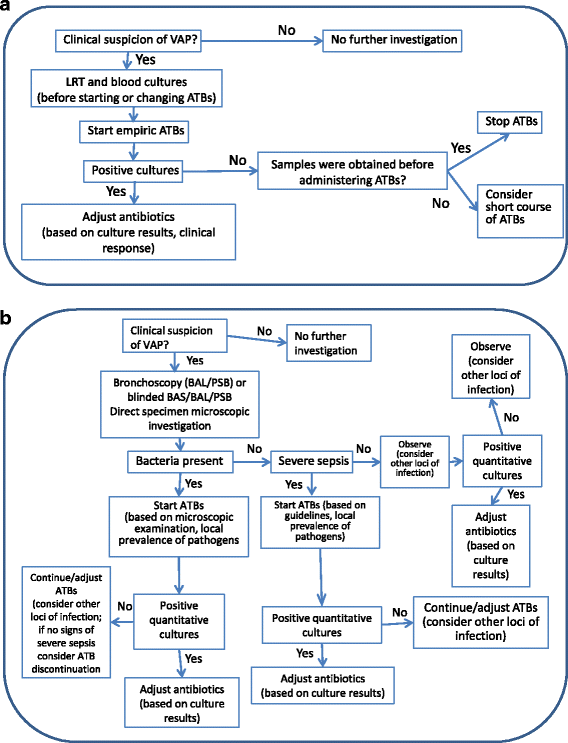Advances in antibiotic therapy in the critically ill
- PMID: 27184564
- PMCID: PMC4869332
- DOI: 10.1186/s13054-016-1285-6
Advances in antibiotic therapy in the critically ill
Abstract
Infections occur frequently in critically ill patients and their management can be challenging for various reasons, including delayed diagnosis, difficulties identifying causative microorganisms, and the high prevalence of antibiotic-resistant strains. In this review, we briefly discuss the importance of early infection diagnosis, before considering in more detail some of the key issues related to antibiotic management in these patients, including controversies surrounding use of combination or monotherapy, duration of therapy, and de-escalation. Antibiotic pharmacodynamics and pharmacokinetics, notably volumes of distribution and clearance, can be altered by critical illness and can influence dosing regimens. Dosing decisions in different subgroups of patients, e.g., the obese, are also covered. We also briefly consider ventilator-associated pneumonia and the role of inhaled antibiotics. Finally, we mention antibiotics that are currently being developed and show promise for the future.
Figures
Comment in
-
Advances in antibiotic therapy in the critically ill.Crit Care. 2016 Dec 5;20(1):393. doi: 10.1186/s13054-016-1544-6. Crit Care. 2016. PMID: 27919273 Free PMC article. No abstract available.
Similar articles
-
Does de-escalation of antibiotic therapy for ventilator-associated pneumonia affect the likelihood of recurrent pneumonia or mortality in critically ill surgical patients?J Trauma. 2009 May;66(5):1343-8. doi: 10.1097/TA.0b013e31819dca4e. J Trauma. 2009. PMID: 19430237
-
Individualized antibiotic strategies.Curr Opin Anaesthesiol. 2016 Apr;29(2):166-71. doi: 10.1097/ACO.0000000000000302. Curr Opin Anaesthesiol. 2016. PMID: 26765979 Review.
-
Pharmacokinetic issues for antibiotics in the critically ill patient.Crit Care Med. 2009 Mar;37(3):840-51; quiz 859. doi: 10.1097/CCM.0b013e3181961bff. Crit Care Med. 2009. PMID: 19237886 Review.
-
How to optimize antibiotic pharmacokinetic/pharmacodynamics for Gram-negative infections in critically ill patients.Curr Opin Infect Dis. 2018 Dec;31(6):555-565. doi: 10.1097/QCO.0000000000000494. Curr Opin Infect Dis. 2018. PMID: 30299354 Review.
-
The use and risks of antibiotics in critically ill patients.Expert Opin Drug Saf. 2016 May;15(5):667-78. doi: 10.1517/14740338.2016.1164690. Epub 2016 Apr 7. Expert Opin Drug Saf. 2016. PMID: 26961691 Review.
Cited by
-
Selecting the dosage of ceftazidime-avibactam in the perfect storm of nosocomial pneumonia.Eur J Clin Pharmacol. 2020 Mar;76(3):349-361. doi: 10.1007/s00228-019-02804-z. Epub 2019 Dec 14. Eur J Clin Pharmacol. 2020. PMID: 31836928 Free PMC article. Review.
-
LC-MS/MS-Based Serum Metabolomics and Transcriptome Analyses for the Mechanism of Augmented Renal Clearance.Int J Mol Sci. 2023 Jun 21;24(13):10459. doi: 10.3390/ijms241310459. Int J Mol Sci. 2023. PMID: 37445637 Free PMC article.
-
Piperacillin-tazobactam as alternative to carbapenems for ICU patients.Ann Intensive Care. 2017 Nov 10;7(1):113. doi: 10.1186/s13613-017-0334-x. Ann Intensive Care. 2017. PMID: 29127502 Free PMC article. Review.
-
Modeling antibiotic treatment in hospitals: A systematic approach shows benefits of combination therapy over cycling, mixing, and mono-drug therapies.PLoS Comput Biol. 2017 Sep 15;13(9):e1005745. doi: 10.1371/journal.pcbi.1005745. eCollection 2017 Sep. PLoS Comput Biol. 2017. PMID: 28915236 Free PMC article.
-
The intestinal microbiota: Antibiotics, colonization resistance, and enteric pathogens.Immunol Rev. 2017 Sep;279(1):90-105. doi: 10.1111/imr.12563. Immunol Rev. 2017. PMID: 28856737 Free PMC article. Review.
References
-
- Ferrer R, Martin-Loeches I, Phillips G, Osborn TM, Townsend S, Dellinger RP, et al. Empiric antibiotic treatment reduces mortality in severe sepsis and septic shock from the first hour: results from a guideline-based performance improvement program. Crit Care Med. 2014;42:1749–1755. doi: 10.1097/CCM.0000000000000330. - DOI - PubMed
-
- Bauer KA, West JE, Balada-Llasat JM, Pancholi P, Stevenson KB, Goff DA. An antimicrobial stewardship program's impact with rapid polymerase chain reaction methicillin-resistant Staphylococcus aureus/S. aureus blood culture test in patients with S. aureus bacteremia. Clin Infect Dis. 2010;51:1074–1080. doi: 10.1086/656623. - DOI - PubMed
Publication types
MeSH terms
Substances
LinkOut - more resources
Full Text Sources
Other Literature Sources
Medical


